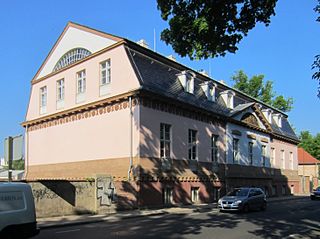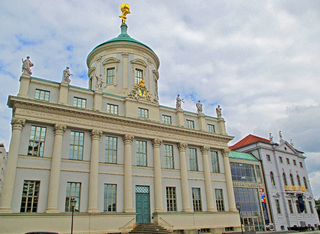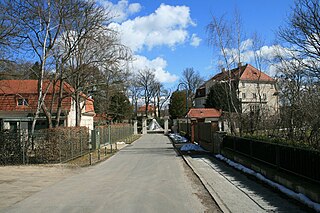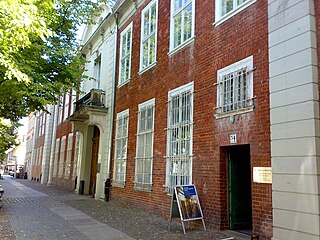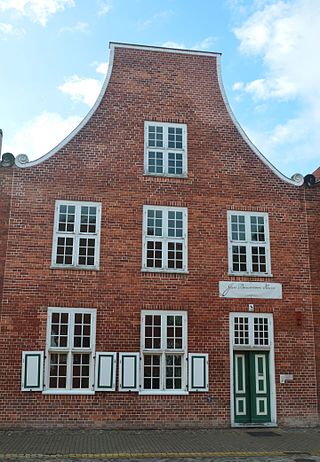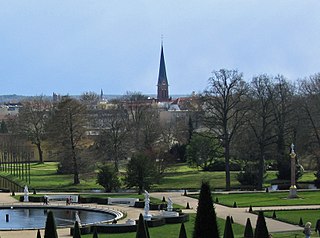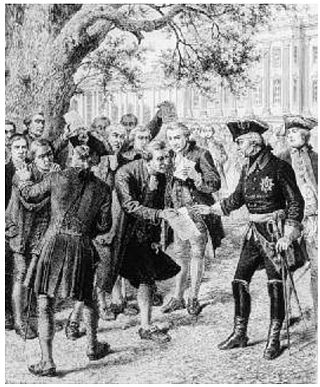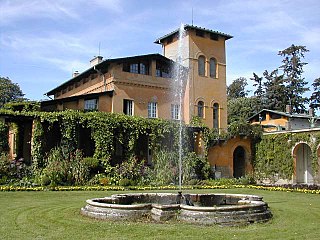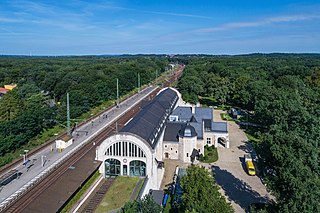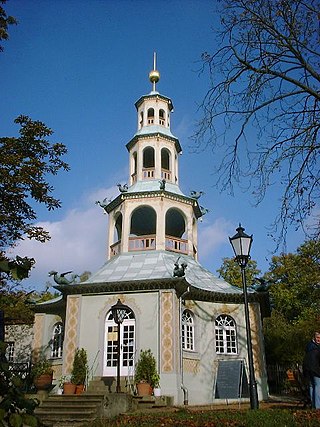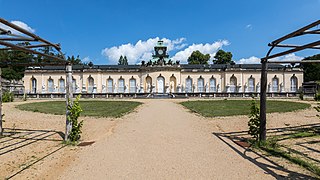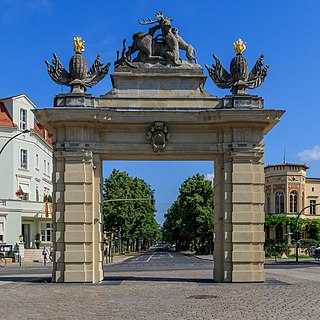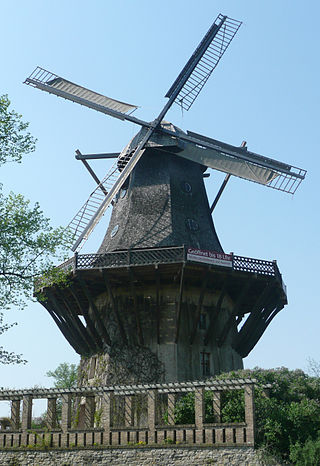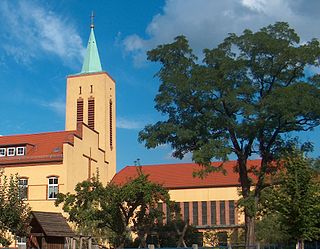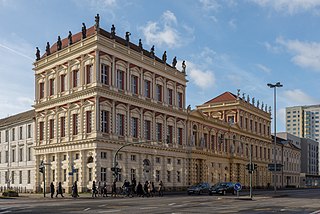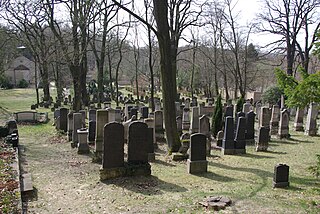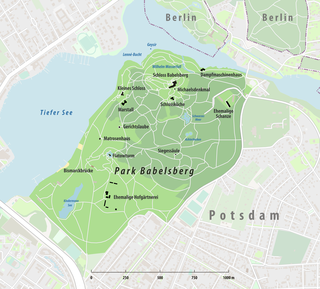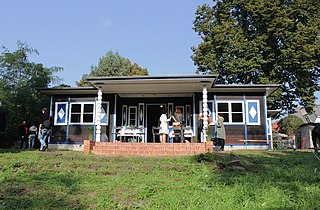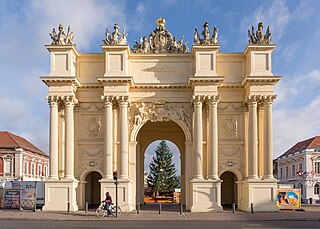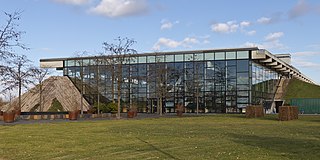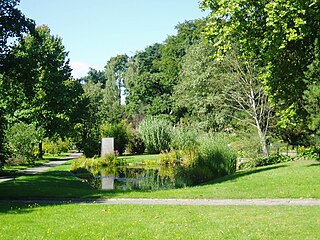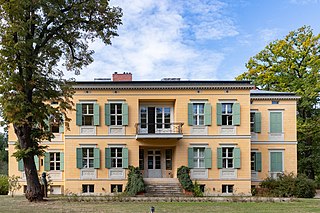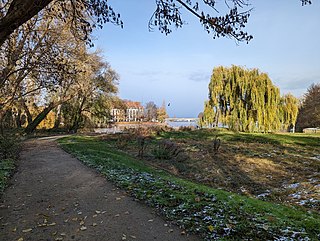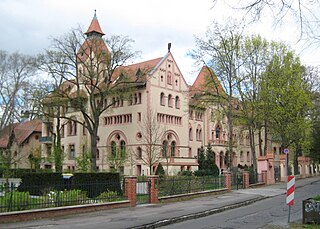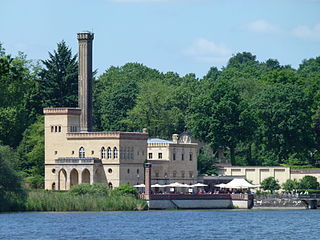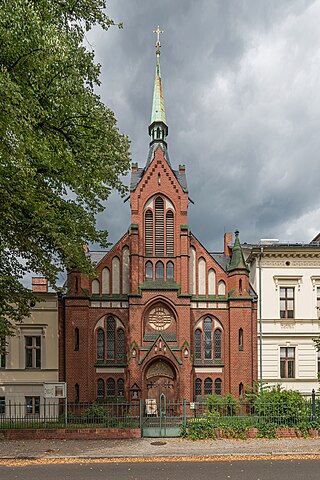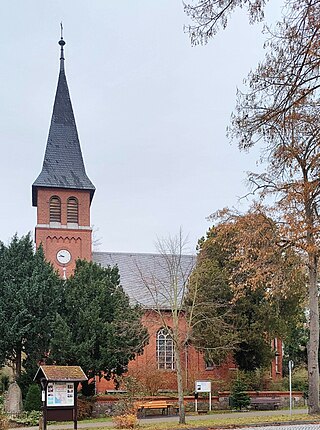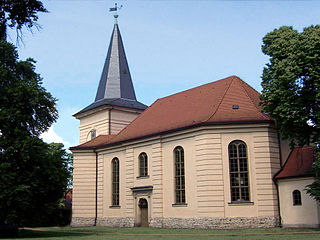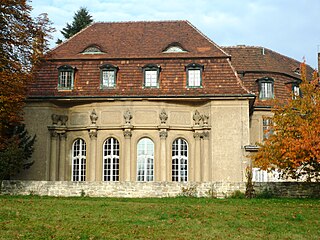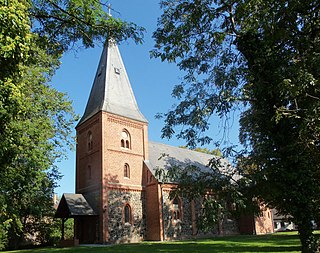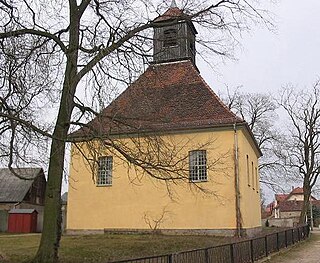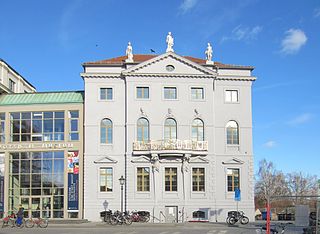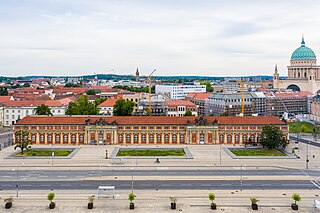84 Sights in Potsdam, Germany (with Map and Images)
Legend
Premium Sights
Book tickets, guided tours and activities in Potsdam.
Guided Free Walking Tours
Book free guided walking tours in Potsdam.
Welcome to your journey through the most beautiful sights in Potsdam, Germany! Whether you want to discover the city's historical treasures or experience its modern highlights, you'll find everything your heart desires here. Be inspired by our selection and plan your unforgettable adventure in Potsdam. Dive into the diversity of this fascinating city and discover everything it has to offer.
Sightseeing Tours in PotsdamActivities in PotsdamThe New Palace is a palace situated on the western side of the Sanssouci park in Potsdam, Germany. The building was begun in 1763, after the end of the Seven Years' War, under King Friedrich II and was completed in 1769. It is considered to be the last great Prussian Baroque palace.
Wikipedia: New Palace, Potsdam (EN), Website, Heritage Website
The Church of St. Peter and Paul is a Roman Catholic church located in the centre of Potsdam, Germany. It sits at the eastern end of Brandenburger Street, at the western end of which is the Potsdamer Brandenburger Gate. The present church building was completed in 1870 and served the Potsdam parishioners and the Catholic soldiers who were stationed in the city. Since 1992 it has had the status of a provost church.
Wikipedia: Peter and Paul Church, Potsdam (EN), Website, Heritage Website
3. Neuer Garten
Like Babelsberg Park and Sanssouci Park, the New Garden is part of the ensemble of Potsdam's Palace Parks. The area is a 102.5-hectare park area bordering the Heiliger See and the Jungfernsee in the north of Potsdam. From 1787, Friedrich Wilhelm II had a new garden laid out on this site, which was to stand out from the baroque Sanssouci Park.
Wikipedia: Neuer Garten Potsdam (DE), Website, Heritage Website
4. Platz der Einheit
The Platz der Einheit is one of the oldest squares in Potsdam, along with Bassinplatz and the Plantage. Laid out under the Soldier King Friedrich Wilhelm I, the square is bordered by the Wilhelmgalerie in the north, residential buildings in the east, the street Am Kanal in the south and the Friedrich-Ebert-Straße in the west. It is an important public transport hub.
5. Alter Markt
The Old Market Square is a centrally located square in downtown Potsdam which forms the historical centre of the city. The square consists of the area around St. Nicholas' Church. Today the term refers in particular to the area directly in front of the church. It is bordered by several prestigious historical buildings. The square has been the site of much architectural reconstruction work in recent years which has restored much historic building fabric that was lost in World War II.
Wikipedia: Old Market Square, Potsdam (EN), Heritage Website
6. Sanssouci Park
Sanssouci is a historical building in Potsdam, near Berlin. Built by Prussian King Frederick the Great as his summer palace, it is often counted among the German rivals of Versailles. While Sanssouci is in the more intimate Rococo style and is far smaller than its French Baroque counterpart, it, too, is notable for the numerous temples and follies in the surrounding park. The palace was designed and built by Georg Wenzeslaus von Knobelsdorff between 1745 and 1747 to meet Frederick's need for a private residence where he could escape the pomp and ceremony of the royal court. The palace's name is a French phrase meaning "without worries" or "carefree", emphasising that the palace was meant as a place of relaxation rather than a seat of power.
7. St. Nikolaikirche
St. Nicholas Church in Potsdam is a Lutheran church under the Evangelical Church in Berlin, Brandenburg and Silesian Upper Lusatia of the Evangelical Church in Germany on the Old Market Square in Potsdam. The central plan building in the Classicist style and dedicated to Saint Nicholas was built to plans by Karl Friedrich Schinkel in the years 1830 to 1837. The tambour of the 77-metre-high church that towers above the roofs of the city was built later, from 1843 to 1850. Its construction was taken over by Ludwig Persius and, from 1845, Friedrich August Stüler.
Wikipedia: St. Nicholas Church, Potsdam (EN), Website, Heritage Website
8. Obelisk

The Obelisk entrance constitutes the eastern limit of Sanssouci Park in Potsdam, Germany. Following plans by Georg Wenzeslaus von Knobelsdorff, Frederick the Great ordered in 1747 that this exit from the park be built.
9. Sanssouci Palace
Sanssouci Palace is a former summer residence of the kings of Prussia in Sanssouci Park in Potsdam, Germany. The single-wing complex was built between 1745 and 1747 by Frederick the Great by Georg Wenzeslaus von Knobelsdorff in the Rococo style. The concert hall, the castle library and the marble hall are worth mentioning. As part of the palaces and parks of Potsdam and Berlin, the "Prussian Versailles" was inscribed on the UNESCO World Heritage List in 1990.
10. Reststück der Berliner Mauer
The Berlin Wall was a guarded concrete barrier that encircled West Berlin from 1961 to 1989, separating it from East Berlin and the German Democratic Republic. Construction of the Berlin Wall was commenced by the government of the GDR on 13 August 1961. It included guard towers placed along large concrete walls, accompanied by a wide area that contained anti-vehicle trenches, beds of nails and other defenses. The primary intention for the Wall's construction was to prevent East German citizens from fleeing to the West.
11. Michelson-Interferometer
The Michelson interferometer is a common configuration for optical interferometry and was invented by the 19/20th-century American physicist Albert Abraham Michelson. Using a beam splitter, a light source is split into two arms. Each of those light beams is reflected back toward the beamsplitter which then combines their amplitudes using the superposition principle. The resulting interference pattern that is not directed back toward the source is typically directed to some type of photoelectric detector or camera. For different applications of the interferometer, the two light paths can be with different lengths or incorporate optical elements or even materials under test.
12. Altes Rathaus
The Old Town Hall is a Palladian secular building on the Alter Markt in Potsdam. It was built between 1753 and 1755 on behalf of Frederick the Great according to designs by Johann Boumann and Carl Ludwig Hildebrandt. The model was the Palazzo Angarano in Vicenza, designed by Andrea Palladio but not executed. Damaged in the air raid on Potsdam in 1945, the Old Town Hall was rebuilt from 1961 to 1966. Since 2012, it has been the seat of the Potsdam Museum.
13. Garnisonkirche
The Garrison Church was a Protestant church in the historic centre of Potsdam. Built by order of King Frederick William I of Prussia according to plans by Philipp Gerlach from 1730 to 1735, it was considered as a major work of Prussian Baroque architecture. With a height of almost 90 metres, it was Potsdam's tallest building and shaped its cityscape. In addition, the Garrison Church was part of the city's famous "Three Churches View" together with the St. Nicholas Church and the Holy Spirit Church. After it was damaged during the British bombing in World War II, the East German authorities demolished the church in 1968. After the German reunification, the Garrison Church is currently being rebuilt as a centre for remembrance and reconciliation. The first section opened in 2024, containing a Coventry chapel, an exhibition about the history of the place and a viewing platform at a height of 57 meters.
Wikipedia: Garrison Church (Potsdam) (EN), Facebook, Website
14. Einstein Tower
The Einstein Tower is an astrophysical observatory in the Albert Einstein Science Park in Potsdam, Germany built by architect Erich Mendelsohn. It was built on the summit of the Potsdam Telegraphenberg to house a solar telescope designed by the astronomer Erwin Finlay-Freundlich. The telescope supports experiments and observations to validate Albert Einstein's relativity theory. The building was first conceived around 1917, built from 1919 to 1921 after a fund-raising drive, and became operational in 1924. Although Einstein never worked there, he supported the construction and operation of the telescope. It is still a working solar observatory today as part of the Leibniz Institute for Astrophysics Potsdam. Light from the telescope is directed down through the shaft to the basement where the instruments and laboratory are located. There were more than half a dozen telescopes in the laboratory.
15. Königlich-Preußische Kriegsschule
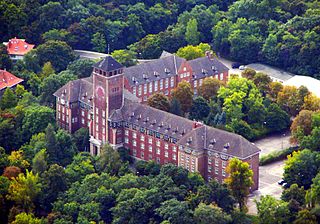
The historic Royal Prussian War School or the Schwechten Building is a building complex that was built from 1899 to 1902 on the instructions of Kaiser Wilhelm II on Potsdam's Brauhausberg. The building ensemble was also used continuously after the dissolution of the war school in 1919; from 1946 to 1952 and from 1990 to 2013 it housed the Brandenburg state parliament until it was replaced by the Potsdam City Palace. From December 2015 to September 2018 it was a refugee shelter. From the second half of 2019, 200 apartments will be built in the building. In the GDR era, the nickname "Kremlin" prevailed for the complex.
16. Neuer Lustgarten
Der Lustgarten war die älteste Gartenanlage in Potsdam. Seine damalige Fläche wird von der Breiten Straße mit dem Marstall im Norden, der Havel im Osten, dem Bahndamm im Süden und dem Innenministerium im Westen umrahmt. Als Barockgarten unter dem Großen Kurfürsten Friedrich Wilhelm für das Stadtschloss geschaffen und unter König Friedrich Wilhelm I. zur Hälfte in eine Exerzierfläche verwandelt, wurde das Übrige durch Friedrich II. und 1829 von Peter Joseph Lenné umgestaltet. Nach dem Zweiten Weltkrieg wurde der beschädigte Lustgarten mit dem Ernst-Thälmann-Stadions und später mit dem Interhotel Potsdam überbaut. Anlässlich der Bundesgartenschau 2001 wurde nach dem ersatzlosen Abriss des Stadions der größtenteils versiegelte Neue Lustgarten als Veranstaltungsfläche angelegt.
17. Ringerkolonnade
The Potsdam City Palace is a building in Potsdam, Germany, located on the Old Market Square, next to the St. Nicholas' Church (Nikolaikirche). It was the second official residence of the margraves and electors of Brandenburg, later kings in Prussia, kings of Prussia and German emperors.
18. Der Jahrhundertschritt
The Step of the Century is a bronze sculpture that was created by Wolfgang Mattheuer in 1984. It is considered one of the most important works of art in the GDR at the time of the division of Germany and is a parable of the turmoil of the 20th century.
19. Fortunaportal
The Fortuna Portal on the Old Market Square in Potsdam, opposite the Church of St. Nikolai, was designed by the Dutch architect Jean de Bodt in 1701 as the entrance gate to the Potsdam City Palace and inaugurated in 1701 on the occasion of the self-coronation of Elector Frederick III as King Frederick I of Prussia. Since then, the construction of the Fortuna Portal has been regarded as the beginning of classical Potsdam architecture.
20. Französische Kirche
The Protestant French Church in Potsdam is a late work by the architect Georg Wenzeslaus von Knobelsdorff. In the Edict of Potsdam (1685), the Great Elector had offered the Huguenots who had fled France a new home in Prussia. In 1752/53 the church was built for the gradually growing French Reformed congregation of Potsdam. Since the heavy destruction of the city in the Second World War, it has been the oldest surviving church in the historic city area.
Wikipedia: Französische Kirche (Potsdam) (DE), Website, Website En, Website Fr, Heritage Website, Website Nl
21. Friedenskirche
The Protestant Church of Peace is situated in the Marly Gardens on the Green Fence in the palace grounds of Sanssouci Park in Potsdam, Germany. The church was built according to the wishes and with the close involvement of the artistically gifted King Frederick William IV and designed by the court architect, Ludwig Persius. After Persius' death in 1845, the architect Friedrich August Stüler was charged with continuing his work. Building included work by Ferdinand von Arnim and Ludwig Ferdinand Hesse also. The church is located in the area covered by the UNESCO World Heritage Site Palaces and Parks of Potsdam and Berlin.
22. Bornstedter Friedhof
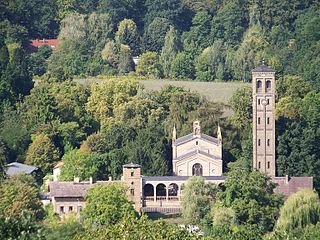
The Bornstedt cemetery is located directly opposite the Bornstedt Crown Estate in the immediate vicinity of the Potsdam Orangery. Not only residents of Bornstedt are buried on it, but also numerous personalities. Theodor Fontane already wrote: What dies in Sanssouci is buried in Bornstedt.
Wikipedia: Bornstedter Friedhof (DE), Website, Heritage Website
23. Chinese House

The Chinese House is a garden pavilion in Sanssouci Park in Potsdam, Germany. Frederick the Great had it built, about seven hundred metres southwest of the Sanssouci Summer Palace, to adorn his flower and vegetable garden. The garden architect was Johann Gottfried Büring, who between 1755 and 1764 designed the pavilion in the then-popular style of Chinoiserie, a mixture of ornamental rococo elements and parts of Chinese architecture.
24. Dampfmaschinenhaus (Moschee)
The former steam engine house for Sanssouci – also known as the "pump house" or "mosque" – is located in Potsdam on the Neustadt Havel Bay. It was built at the request of King Frederick William IV in the years 1841–1843 under the direction of Ludwig Persius for the operation of the Great Fountain in front of Sanssouci Palace. It is one of the Historical Landmarks of Engineering in Germany and is an outstanding example of Orientalizing architecture.
Wikipedia: Dampfmaschinenhaus für Sanssouci (DE), Heritage Website
25. Brauhausberg
The Brauhausberg is an 88 m high elevation in the Teltow suburb of Potsdam. It is located in front of the Ravensberge and forms the northern end of the Saarmund terminal moraine arch. Its name is based on a brewery that opened on it in the early 18th century. Its southern neighbour is the Telegrafenberg, which was called Hinterer Brauhausberg until 1832. The Brauhausberg is considered an ancient natural landmark in the glacial valley, long before the Havel existed.
26. Palais Lichtenau
Built between 1796 and 1797 under King Friedrich Wilhelm II in the immediate vicinity of the New Garden, it is an outstanding monument of early classicist architecture in Germany due to its façade design and the quality of the preserved interiors. The authorship of the building is disputed between Michael Philipp Boumann and Carl Gotthard Langhans. Contrary to tradition and the name, the palace was probably not built for Countess Wilhelmine von Lichtenau and was not inhabited by her.
27. Potsdam Museum
The Potsdam Museum – Forum for Art and History, founded at the beginning of the 20th century, has one of the largest collections of art, cultural and regional history in the state of Brandenburg with over 250,000 objects. The collection reflects the civic commitment and passion for collecting of the founding years. The diverse collections include cultural-historical and military-historical areas as well as works of artistic creation.
28. Filmmuseum Potsdam
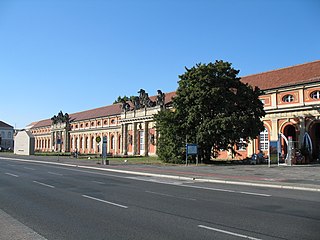
The Filmmuseum Potsdam was founded in 1981 as the "Film Museum of the GDR", making it the oldest film museum with its own collection and exhibitions in Germany and receiving its current name in 1990. It has been under the sponsorship of the state of Brandenburg since 1991 and is part of the Film University Babelsberg. At the centre of the collections and the permanent exhibition are the world's oldest film studio in Babelsberg, its film productions and the artists who worked there on films by Bioscop, Ufa, DEFA and Studio Babelsberg. Temporary exhibitions, family exhibitions and foyer exhibitions on German and international film and media topics complement the exhibition programme. The Film Museum operates a museum shop and a cinema with several screenings daily, silent film screenings are accompanied by music on the historic Welte cinema organ.
29. Schloss Charlottenhof
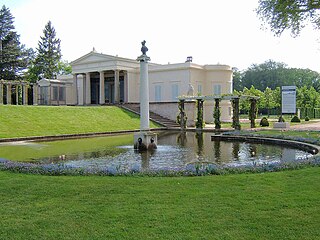
Charlottenhof Palace or Charlottenhof Manor is a former royal palace located southwest of Sanssouci Palace in Sanssouci Park at Potsdam, Germany. It is best known as the summer residence of Crown Prince Frederick William. Today it is maintained by the Prussian Palaces and Gardens Foundation Berlin-Brandenburg.
30. Modellfort
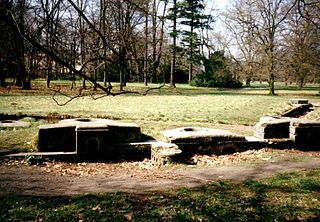
The fort in Sanssouci Park was a fortress model to represent new gun technology with armor in fortifications at the end of the 19th century. The Krupp company had the model fort built in 1893 in the northwestern part of Potsdam's Sanssouci park in order to convince Kaiser Wilhelm II of the basic principles of the new technology. In November 2004, the ruins were filled in by the Prussian Palaces and Gardens Foundation Berlin-Brandenburg and have not been open to the public since then.
31. Schloss Kartzow
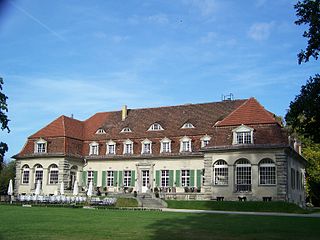
Kartzow Castle is a manor house in the Kartzow district of Potsdam, Germany. It emerged from a manor and was rebuilt between 1912 and 1914 according to plans by the Berlin architect Eugen Schmohl in the Baroque style.
32. Villa von Diringshofen
The Villa von Diringshofen, also called Villa Sigismund or Haus Lehnitzsee, is an upper-middle-class residential building in Potsdam, in the district of Neu Fahrland, Am Lehnitzsee 8. The villa is named after its builders, Lieutenant General Max von Diringshofen (1855–1936) and his second wife Margarete von Diringshofen née de Haën (1871–1915), daughter of the entrepreneur Eugen de Haën, the owner of the E. de Haën AG company. They had the house built between 1912 and 1913 on the western shore of Lake Lehnitz as a retirement home. The architect of the three-storey building was Ludwig Otte in Berlin-Lichterfelde.
33. Bahnhof Potsdam Griebnitzsee
Potsdam-Griebnitzsee station is a regional and S-Bahn station in Potsdam on the outskirts of Berlin in the German state of Brandenburg. The station is located in the east of the Babelsberg suburb of the city of Potsdam in the state of Brandenburg, and about 600 metres (2,000 ft) outside the Berlin city boundary. It takes its name from the adjacent Griebnitzsee lake. It is on the Wannsee Railway. During the division of Germany, it served as a border station for traffic to West Berlin. The station is now served by trains on line S7 of the Berlin S-Bahn and Regionalbahn services RB 20, RB 22, and RB 23. It is classified by Deutsche Bahn as a category 4 station.
Wikipedia: Potsdam Griebnitzsee station (EN), Heritage Website
34. Gedenkstätte Lindenstraße 54/55
The Lindenstraße 54/55 memorial in Potsdam commemorates the political persecution in both German dictatorships. The building, popularly known as the "Lindenhotel", served as a remand prison for political prisoners during the National Socialist era and was taken over after the war by the Soviet secret service NKVD/MGB and later the East German State Security in the same function. After the political turnaround, it became the House of Democracy and was used as a memorial from 2007.
35. Potsdamer Glockenspiel
The Potsdam carillon on the plantation in Potsdam, is the replica of the historic carillon of the Garrison Church about 200 meters north of the original location. It has been a listed building since July 2021.
36. Jan Bouman Haus
The Jan Bouman House is a museum located at Mittelstraße 8 in the Dutch Quarter in Potsdam. It was named after the Royal Prussian Chief Planning Director and master builder of the district, Jan Bouman.
37. Marmor Palace
The Marmorpalais is a former royal residence in Potsdam, near Berlin in Germany, built on the grounds of the extensive Neuer Garten on the shores of the Heiliger See. The palace was commissioned by King Frederick William II of Prussia and designed in the early Neoclassical style by the architects Carl von Gontard and Carl Gotthard Langhans. Despite the name, brick is the main material. The palace remained in use by the Hohenzollern family until the early 20th century. It served as a military museum under communist rule, but has since been restored and is once again open to the public.
38. Werner-Alfred-Bad

The Werner-Alfred-Bad is a former swimming pool in Potsdam, Germany. It was named after the German aviation pioneer Werner Alfred Pietschker. The facility at Hegelallee 23 has been a health centre since a total renovation in 2009.
39. Erlöserkirche Potsdam
The Protestant Church of the Redeemer is located in Potsdam's Brandenburger Vorstadt district at the intersection of Nansenstraße / Meistersingerstraße. The slender tower with its 74 meters height is a landmark of the Brandenburg suburb and can be seen from afar.
Wikipedia: Erlöserkirche (Potsdam) (DE), Website, Heritage Website
40. Bittschriftenlinde
The petition linden tree stood in Potsdam in Humboldtstraße, at the southern corner of the City Palace. It was the most famous tree in the city. On the site of the original tree there is now a second lime tree, which is also called the petition lime tree.
41. Gärtnergehilfenhaus
The Roman Baths, situated northeast of the Charlottenhof Palace in the Sanssouci Park in Potsdam, reflect the Italiensehnsucht of its creator Frederick William IV of Prussia. Various classical Roman and antique Italian styles were melded into an architectural ensemble, created between 1829 and 1840.
42. Bürgerbahnhof
Potsdam Park Sanssouci is a German railway station located in Potsdam, the capital city of Brandenburg, on the Berlin–Magdeburg railway. Named Potsdam Wildpark until 1999, it serves the Sanssouci Park and is famous for the Kaiserbahnhof building.
43. Museum Barberini
The Museum Barberini is an art museum in Potsdam opened in 2017. Its exhibitions range from the so-called Old Masters to contemporary art, with an emphasis on impressionist painting. Centered around works from the collection of its founder and patron Hasso Plattner, the Barberini presents three temporary exhibitions per year, featuring loans from international museums and private collections. Academic conferences serve to prepare these exhibitions. At the same time, shorter gallery displays – the so-called “art histories” – put works from the collection into constantly shifting contexts. The museum aims to offer a diverse programme of events and educational activities as well as digital offers like the Barberini App and the 4K Smart Wall in the museum.
Wikipedia: Museum Barberini (EN), Twitter, Facebook, Instagram, Website, Youtube
44. Drachenhaus
Dragon House is a historical building in Potsdam, Germany, built by King Frederick the Great of Prussia on the southern slope of the Klausberg, which borders the northern edge of Sanssouci Park. It was constructed between 1770 and 1772 in the prevailing Chinoiserie taste of the time, designed to imitate a Chinese pagoda. Carl von Gontard was commissioned to build it. The house served as the residence of the vineyard's vintner.
45. Picture Gallery
The Picture Gallery in the Sanssouci Park of Potsdam was built in 1755–64 during the reign of Frederick II of Prussia under the supervision of Johann Gottfried Büring. The Picture Gallery is situated east of the palace and is the oldest extant museum built for a ruler in Germany.
Wikipedia: Sanssouci Picture Gallery (EN), Website, Heritage Website
46. Jägertor
The Jägertor from 1733 is the oldest surviving Potsdam city gate. It stands in the axis of Lindenstraße and forms one of the city exits to the north. It was named after the electoral Jägerhof in front of the city. The gate was originally part of the Potsdam excise wall, which was not used for fortification, but was intended to prevent the desertion of soldiers and the smuggling of goods. Since Lindenstraße cut diagonally through the former line of the Wall, the Jägertor was built diagonally to the course of the Wall.
47. Muschelgrotte
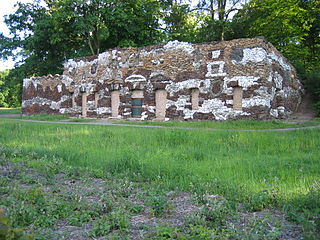
The Crystal and Shell Grotto in the New Garden is located in the north of Potsdam's park on the shore of the Jungfernsee, southeast within sight of the Meierei and north of Cecilienhof Palace. Frederick William II commissioned the chief court architect Andreas Ludwig Krüger to plan a grotto, which was built between 1791 and 1794 under the direction of his son Friedrich Ludwig Carl Krüger on a specially created hill. The grotto in the castle garden of Oranienburg, built around 1754/56, served as a model. In contrast to the building there, which was recognizable as garden architecture, the grotto in the New Garden was intended to look as if it had been created by nature. In order to achieve this naturalness, Krüger had the brick building clad with turf ironstone from Golzow, tufa from Rothenburg ob der Tauber, gypsum stone from the Harz Mountains as well as slag and fused, sintered bricks, so-called "Schmolz".
Wikipedia: Muschelgrotte im Neuen Garten (DE), Heritage Website
48. Historische Mühle
The Historic Mill of Sanssouci is a mill in Potsdam, Germany. Thanks to the legend of The Miller of Sanssouci, the Mill became famous, particularly due to its association with Frederick the Great and his summer palace of Sanssouci.
Wikipedia: Historic Mill of Sanssouci (EN), Heritage Website, Youtube
49. Sankt Antonius Kirche
The Roman Catholic Church of St. Antonius in Potsdam's Babelsberg district is located between Plantagenstraße and Turnstraße. The church building, consecrated in 1934, is the parish church of the Babelsberg parish.
Wikipedia: St. Antonius (Potsdam) (DE), Website, Heritage Website
50. Kellertorwache
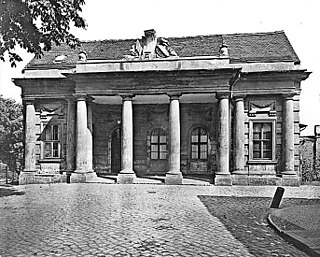
The Kellertor, named after the Kellerstraße leading to the Electoral Wine Cellar, was one of a total of ten historic Potsdam city gates. Together with the remains of the city wall from 1722 in the Große Fischerstraße and the beginning of the city canal, the building marked the city's eastern access to the water.
51. Marienquelle
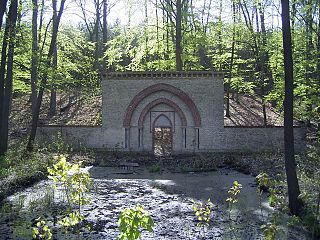
The Holy Gate of the Holy Sepulchre, better known as the Marienquelle, is a spring on Templiner Straße near the entrance to Caputh, near Templin, in the Forst Potsdam Süd forest area belonging to the city of Potsdam. It is entered in the Brandenburg List of Monuments.
52. Winzerberg
The Winzerberg is located in Potsdam and is located east opposite Sanssouci Park. The entrance from the southern foot of the hill is formed by the imposing Triumphal Gate. The Winzerberg is part of the administrative inventory of the Prussian Palaces and Gardens Foundation Berlin-Brandenburg, is maintained by a support association that has already completely restored it and has been part of Potsdam's World Heritage Site since 1990.
53. Schloss Babelsberg
Babelsberg Palace lies in the eponymous park and quarter of Potsdam, the capital of the German state of Brandenburg, near Berlin. For over 50 years it was the summer residence of Prince William, later German Emperor William I and King of Prussia and his wife, Augusta of the House of Saxe-Weimar-Eisenach, German Empress and Queen of Prussia. Along with the surrounding park and other parks in the area, the Babelsberg Palace was inscribed on the UNESCO World Heritage list in 1990 for its architectural cohesion and its testimony to the power of the Prussian monarchy.
Wikipedia: Babelsberg Palace (EN), Website, Heritage Website
54. Hiller-Brandtsche Häuser
Hiller-Brandt houses are the buildings completed in 1769 at Breite Straße 8 to 12 in Potsdam. King Frederick II had the two town houses rebuilt with a uniform façade according to plans by Georg Christian Unger and expanded by a barracks. The building is named after its users, the merchant Johann Friedrich Hiller and the master tailor Johann Gebhardt Brandt. Since the renovation, the listed building has housed rental and owner-occupied apartments since 2013.
55. Jüdischer Friedhof
The Jewish cemetery on the Pfingstberg in Potsdam, the capital of the state of Brandenburg (Germany), was established in 1743. It is located at Puschkinallee 18, near the Belvedere and is a protected monument.
Wikipedia: Jüdischer Friedhof (Potsdam) (DE), Heritage Website
56. Pfingstkirche

Die evangelische Pfingstkirche im Potsdamer Stadtteil Nauener Vorstadt befindet sich in der Großen Weinmeisterstraße. Sie entwickelte sich aus einer 1894 eingeweihten Pfingstkapelle. Neben der Kirche sind auf dem Pfingstgelände das Neue Pfingsthaus, das Pfarrhaus der Gemeinde und das Witwenhaus untergebracht.
Wikipedia: Pfingstkirche (Potsdam) (DE), Website, Heritage Website
57. Dampfmaschinenhaus
Babelsberg Park is a 114 hectare park in the northeast of the city of Potsdam, bordering on the Tiefen See lake on the River Havel. The park was first designed by the landscape artist Peter Joseph Lenné and, after him, by Prince Hermann von Pückler-Muskau and Karl Friedrich Schinkel, by order of the then-prince William I and his wife, Augusta. Located on a hill sloping down to the lake, the park and castle are part of the Palaces and Parks of Potsdam and Berlin, which were inscribed on the UNESCO World Heritage List because of their unique architecture and testimony to the development of landscape design.
58. Sommerhaus Alexander
The Alexander-Haus is a listed building on the shores of Lake Groß Glienicke in the Potsdam district of Groß Glienicke. It was built in 1927 on behalf of the Jewish doctor and then president of the Berlin Medical Association, Alfred Alexander, as a weekend and summer house for the family.
59. Brandenburger Tor
The Brandenburg Gate on the Luisenplatz in Potsdam, not to be confused with the gate of the same name on Berlin's Pariser Platz, was built in 1770–71 by Carl von Gontard and Georg Christian Unger by order of Frederick II of Prussia, to celebrate his several victories in the Seven Years' War.
Wikipedia: Brandenburg Gate (Potsdam) (EN), Heritage Website
60. museum Fluxus+
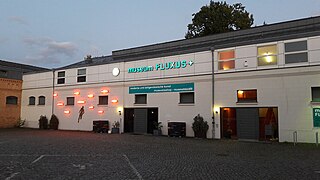
The museum FLUXUS+ is located in Potsdam, Germany and opened in the city's new cultural centre Schiffbauergasse in April 2008. It is Potsdam's first museum of modern art. The 1000 sqm exhibition space of the two-storey building comprehends artworks from private collections. With its large art+life-shop, its café, an “atrium” for temporary exhibitions and events, the museum FLUXUS+ has become a cultural meeting point not only for artists and art-lovers.
61. Volkspark Potsdam
Volkspark Potsdam is located in Bornstedter Feld in the north of the city of Potsdam. The area stretches over three kilometres to the Jungfernsee in the north and to the "Lennésche Feldflur" in the west. In the south it borders on the Ruinenberg of Sanssouci Park and on the Nauener Vorstadt and in the east on the Pfingstberg. With an area of 65 hectares, the park comprises the sub-areas In den Wällen, Kleiner and Großer Wiesenpark, Remisenpark and Waldpark (Schragen). The site, which is managed by the development agency Bornstedter Feld, is subject to admission.
62. Biologischer Garten
The Botanical Garden in Potsdam, is a botanical garden and arboretum maintained by the University of Potsdam. It has a total area of 8.5 hectares, of which 5 hectares are open to the public, and is located immediately southwest of the Orangery Palace at Maulbeerallee 2, Potsdam, in the German state of Brandenburg. It is open daily; an admission fee is charged for the glasshouses only (2017).
63. Seerose
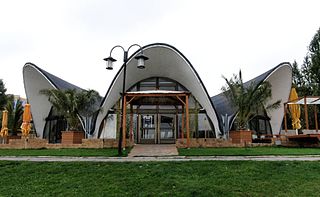
The Seerose Potsdam is a waterfront pavilion in Potsdam, Germany. The eight-fold curved roof structure in the form of a leaf rosette is a hypar shell construction and was designed by civil engineer Ulrich Müther. The building was placed under monument protection by the Brandenburg State Monuments Office on 21 December 2004. The architectural style of the water lily is assigned to organic architecture.
64. Krongut Bornstedt
The Bornstedt Crown Estate is a former royal estate and, today, a tourist attraction in the Potsdam borough of Bornstedt. It belongs to the ensemble of palaces and gardens of Sanssouci Park, which is a UNESCO World Heritage Site along with other parks and palaces in the area.
65. Villa Quandt
Villa Quandt is a villa on the Pfingstberg in Potsdam, Germany. It is named after the widow of the War Council, Ulrike Augusta von Quandt, houses the Theodor Fontane Archive and the Brandenburg Literature Office, and is part of the administrative collection of the Prussian Palaces and Gardens Foundation.
66. Nuthepark
The Nuthepark is a near-natural landscape park in Potsdam. The park stretches along the east bank of the Havel south and north of the mouth of the Nuthe, starting in the south at Potsdam Central Station to Babelsberg Park. It was newly created between 1998 and 2001 in the course of preparations for the Federal Garden Show 2001 on a fallow site. To connect the two parts, the Nuthe is spanned by a pedestrian and cyclist bridge shortly before the mouth. The green spaces newly created in 2020 by the Investment Bank of the State of Brandenburg are to merge with the areas of the Nuthepark in the future.
67. Bornstedter Kirche
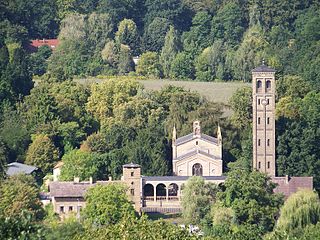
The church of Bornstedt is a church building built in the 19th century in the Potsdam district of Bornstedt. It belongs to the Protestant church district of Potsdam of the Evangelical Church of Berlin-Brandenburg-Silesian Upper Lusatia and is a listed building.
Wikipedia: Kirche Bornstedt (Potsdam) (DE), Website, Heritage Website
68. Kaiserin-Augusta-Stift
The Kaiserin-Augusta-Stift at Potsdam's New Garden is a castle-like building complex that was built from 1900 to 1902 under the direction of the architects Lothar Krüger and Arthur Kickton in the neo-Romanesque architectural style, originally as a home for war-orphaned girls by the Empress Augusta Foundation.
Wikipedia: Kaiserin-Augusta-Stift (Potsdam) (DE), Heritage Website
69. Brandenburg Museum für Zukunft, Gegenwart und Geschichte
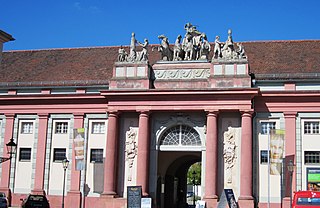
The Brandenburg Museum for Future, Present and History, until 2024 House of Brandenburg-Prussian History, is a museum on the Neuer Markt in Potsdam, which is located there in the carriage horse stable. It sees itself as an open forum for active engagement with Brandenburg and Prussian history.
Wikipedia: Brandenburg Museum (DE), Tiktok, Facebook, Linkedin, Instagram, Website, Vimeo, Youtube
70. Teufelsbrücke
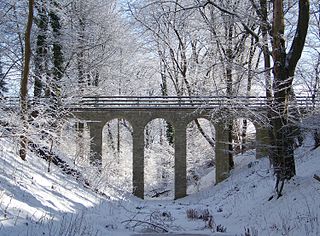
The Devil's Graben Bridge is a five-arched stone viaduct in Potsdam-Bornstedt, planned in 1843 by the architect Ludwig Persius and built as a pedestrian bridge. It leads over a drainage ditch of Lake Bornstedt leading into the Golmer Loch, which was created in the time of Frederick II. The construction of the bridge was part of the landscape park laid out by Peter Joseph Lenné on behalf of Frederick William IV, which connected the Bornstedt Crown Estate with Lindstedt Castle. The Devil's Ditch is now without water. This flows in clay pipes laid underground in 1891.
Wikipedia: Teufelsgrabenbrücke (Potsdam) (DE), Heritage Website
71. Meierei und Pumpwerk
The Dairy in the New Garden is a historic building located in Potsdam, Germany. It is situated on the shore of the Jungfernsee lake, at the northernmost tip of the New Garden. The Dairy was constructed between 1790 and 1792 under the supervision of master builder Carl Gotthard Langhans, with Andreas Ludwig Krüger carrying out the construction.
72. Evangelisch-Lutherische Christuskirche
Die Christuskirche ist ein denkmalgeschütztes Bauwerk im Potsdamer Stadtteil Nauener Vorstadt, Behlertstraße 9. Sie ist das Gotteshaus der evangelisch-lutherischen Christusgemeinde der Selbständigen Evangelisch-Lutherischen Kirche (SELK).
Wikipedia: Christuskirche (Potsdam) (DE), Website, Heritage Website
73. Dorfkirche Marquardt
The Marquardt village church is a listed Protestant church in the Marquardt district of Potsdam, Brandenburg. The church, which belongs to the parish of Töplitz in the Mittelmark-Brandenburg church district of the Evangelical Church Berlin-Brandenburg-Silesian Upper Lusatia, is listed in the list of monuments of the state of Brandenburg under the ID no. 09156742 entered.
Wikipedia: Dorfkirche Marquardt (DE), Website, Heritage Website
74. Jagdschloss Stern
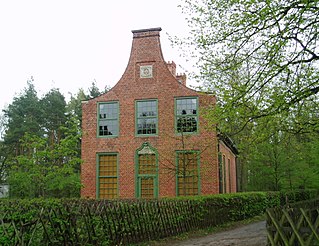
The Stern Hunting Lodge in Potsdam was built between 1730 and 1732 under the reign of the Soldier King Frederick William I in the style of a simple Dutch town house. The contract for the construction was probably awarded to Cornelius van den Bosch, a grenadier and master carpenter from Holland, and the building was supervised by Pierre de Gayette, Captain of the Corps of Engineers and Court Architect.
75. Hans Otto Theater
The Hans Otto Theatre, named after the actor Hans Otto, is a municipal theatre in Potsdam in Germany. Its headquarters and main venue is in the Großes Haus am Tiefen See in Potsdam's cultural district on Schiffbauergasse. Other regular venues are the neighbouring historic Reithalle and occasionally the Palace Theatre in the Neues Palais.
76. Friedrichskirche
The Friedrichskirche is on Weberplatz of Babelsberg, a district of the capital Potsdam of Brandenburg. The parish belongs to the Potsdam church district of the Evangelical Church in Berlin-Brandenburg-Silesian Upper Lusatia.
Wikipedia: Friedrichskirche (Babelsberg) (DE), Website, Heritage Website
77. Grünes Gitter
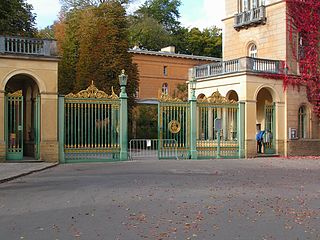
The Green Gate in Potsdam is the main gateway into Sanssouci Park and is situated at the end of the avenue to Sanssouci Palace. This begins as one of three roads that radiate from the Luisenplatz square. The gate was designed by Ludwig Ferdinand Hesse and was put up in 1854 as part of the construction of the Church of Peace. Its name comes from the colour in which the gate was painted. Additional ornamentation is provided by individual bars and points being picked up in gold leaf. The iron gate bears the initials of Frederick William IV.
78. Schloss Marquardt
Schloss Marquardt is a palace located 15 km northwest from downtown Potsdam, in the neighbourhood Marquardt. The palace has been used for different purposes, such as summer or winter residence of nobility and upper-class people, hotel, hospital, and university. Currently the building is used for events, such as weddings and gastronomy, and also as a filming location.
79. Dorfkirche Kartzow
The village church of Kartzow is a listed Protestant church in the Potsdam district of Kartzow. The parish belongs to the parish of Fahrland in the Falkensee church district of the Evangelical Church of Berlin-Brandenburg-Silesian Upper Lusatia. The building is listed in the list of monuments of the state of Brandenburg under the ID no. 09156737 entered.
Wikipedia: Dorfkirche Kartzow (DE), Website, Heritage Website, Service_times Website
80. LOFAR
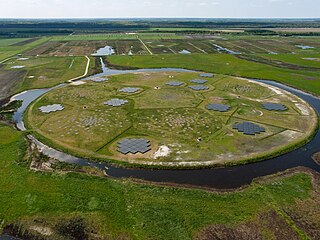
The Low-Frequency Array (LOFAR) is a large radio telescope, with an antenna network located mainly in the Netherlands, and spreading across 7 other European countries as of 2019. Originally designed and built by ASTRON, the Netherlands Institute for Radio Astronomy, it was first opened by Queen Beatrix of The Netherlands in 2010, and has since been operated on behalf of the International LOFAR Telescope (ILT) partnership by ASTRON.
81. Dorfkirche Drewitz
The Drewitz village church is a listed Protestant church in the Drewitz district of the Brandenburg state capital Potsdam. The church is listed in the list of monuments of the state of Brandenburg under the ID no. 09156128 entered. It belongs to the parish of Drewitz-Kirchsteigfeld in the church district of Potsdam of the Evangelical Church of Berlin-Brandenburg-Silesian Upper Lusatia.
Wikipedia: Dorfkirche Drewitz (Potsdam) (DE), Service_times Url, Website, Heritage Website
82. Kleiner Ravensberg
Kleiner Ravensberg is the highest elevation in the municipal area of Potsdam in Brandenburg, Germany with a peak at 114.2 m above sea level. It is located in a woodland called Ravensberge. The hill is part of a push moraine which was formed during the Weichselian glaciation.
83. Knobelsdorff-Haus
The Lehmannsche Haus, also known as the Knobelsdorffhaus, is a Palladian town house on the Alter Markt in Potsdam, Germany. It was built in 1750 by order of Frederick the Great according to a design by Georg Wenzeslaus von Knobelsdorff. The Marble Hill House in Twickenham served as a model.
84. Marstall
The Marstall is an architectural monument on Breite Straße in Potsdam. Built in 1685 by Johann Arnold Nering in the Baroque style as an orangery, it has been rebuilt and expanded several times in the course of history. The former riding horse stable of the city palace is the oldest surviving building in the city and has been home to the Potsdam Film Museum since 1981.
Wikipedia: Marstall (Potsdamer Stadtschloss) (DE), Heritage Website
Share
How likely are you to recommend us?
Disclaimer Please be aware of your surroundings and do not enter private property. We are not liable for any damages that occur during the tours.
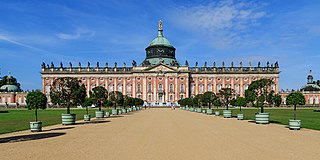
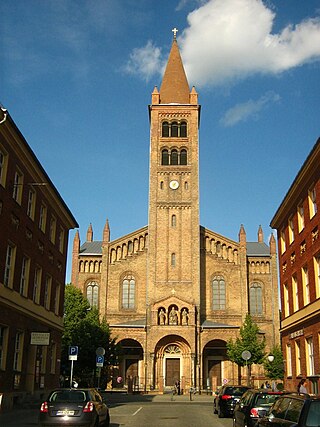
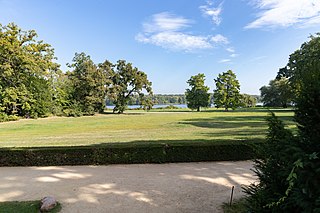

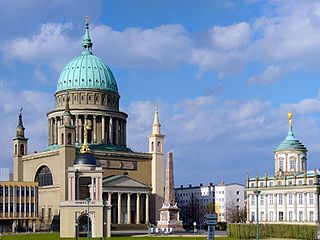
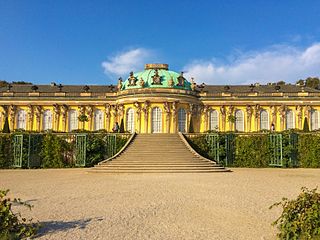
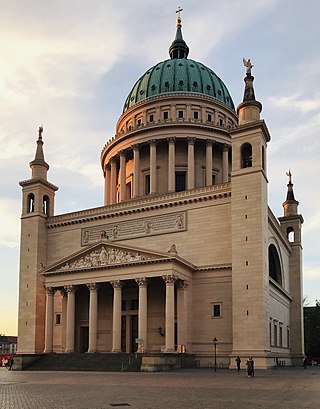
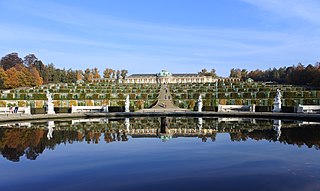
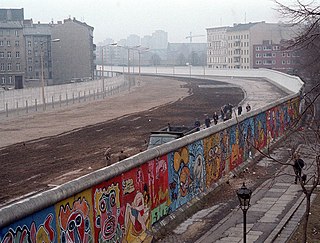
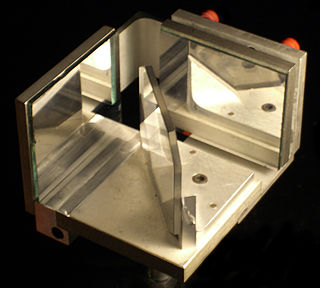
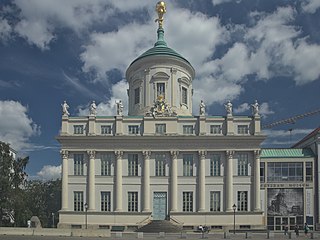
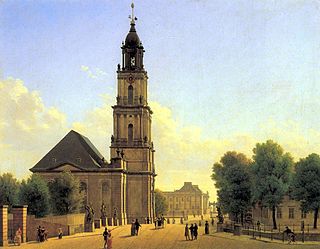
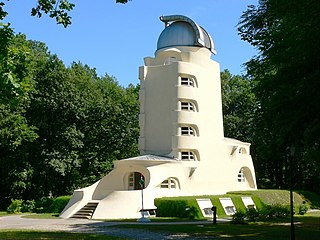

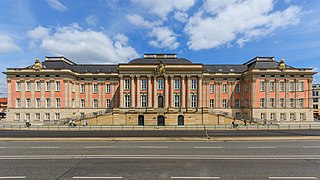

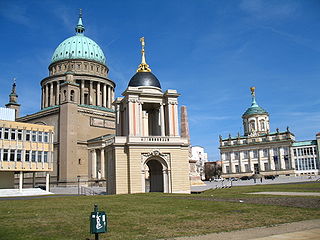
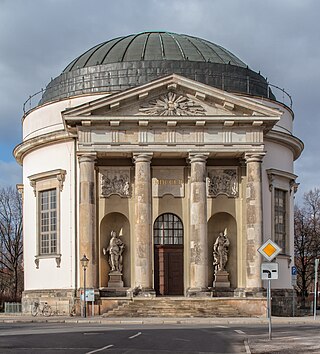
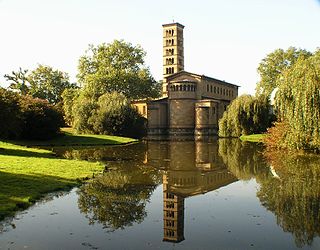
.jpg)

